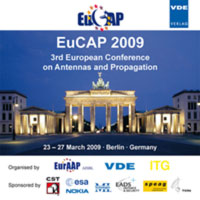Ant Colony Approach in Optimization of Base Station Position
Conference: EuCAP 2009 - 3rd European Conference on Antennas and Propagation
03/23/2009 - 03/27/2009 at Berlin, Germany
Proceedings: EuCAP 2009
Pages: 5Language: englishTyp: PDF
Personal VDE Members are entitled to a 10% discount on this title
Authors:
Vilovic, Ivan; Burum, Niksa (Department of Electrical Engineering and Computing, University of Dubrovnik, Croatia)
Sipus, Zvonimir (Faculty of Electrical Engineering and Computing, University of Zagreb, Croatia)
Abstract:
We are witnesses of the growing interest in providing and improving signal strength coverage for mobile phones and Wireless Local Area Networks (WLANs) in indoor environments. In such cases it is difficult to rigorously obtain the signal strength distribution. A neural network is used as alternative technique to predict signal strength at any point of given environment. It has advantages of deterministic (high accuracy) and empirical (short computation) approaches. The neural network architecture, based on the multilayer perceptron, is used to absorb the knowledge about the given environment through training based on measurements. Such network is capable to predict signal strength that includes absorption and reflection effects. In our approach we used neural network model as a cost function in the optimization of the base station and access point's positions. In this paper we used an algorithm based on global search method known as the ant colony optimization (ACO) method. This optimization method is based on the behaviour of ant colonies in obtaining food and carrying it back to the nest. This algorithm is well suited for discrete problems, so in our case it is needed some modifications to satisfy continuous problem. The pheromone matrix is generated with matrix elements that represent a location for ant movement, i.e. they represent locations of base stations. The population of ants is randomly distributed along the pheromone matrix. They move from one position to another on probabilistic manner that depends of pheromone concentration. The achieved minimum of the cost function represents optimal position of base station or access point. The ACO results are compared with PSO and GA results.


